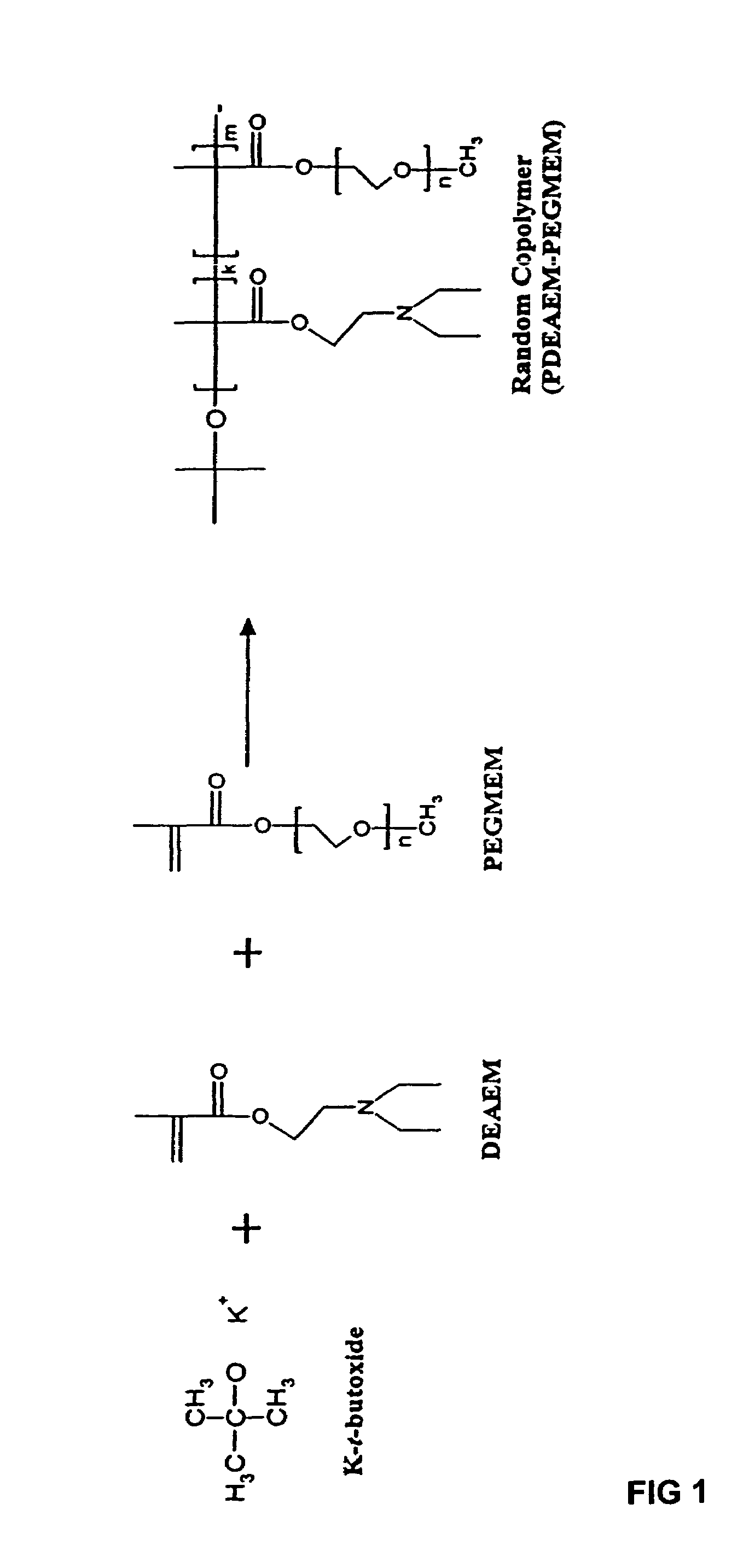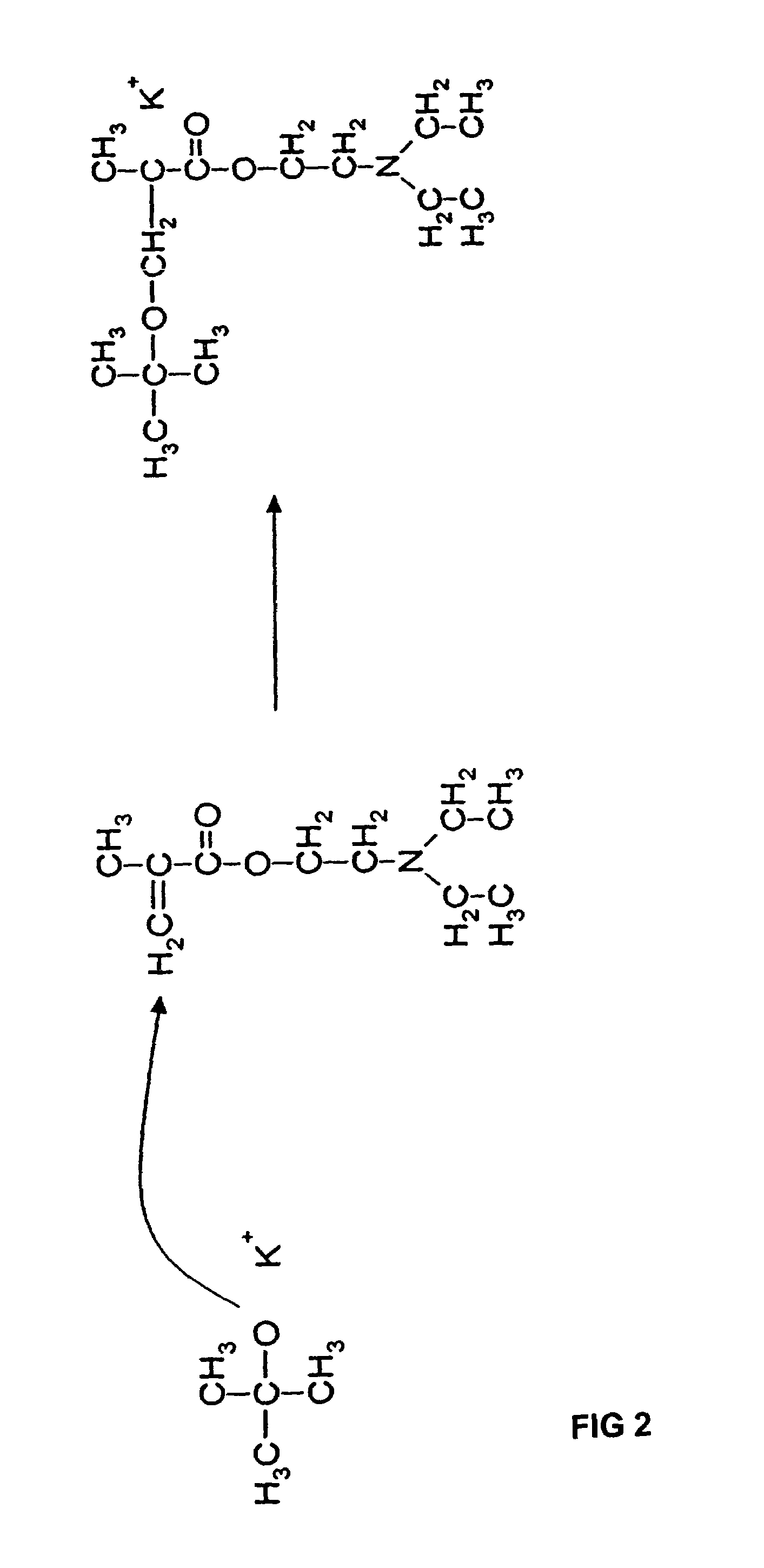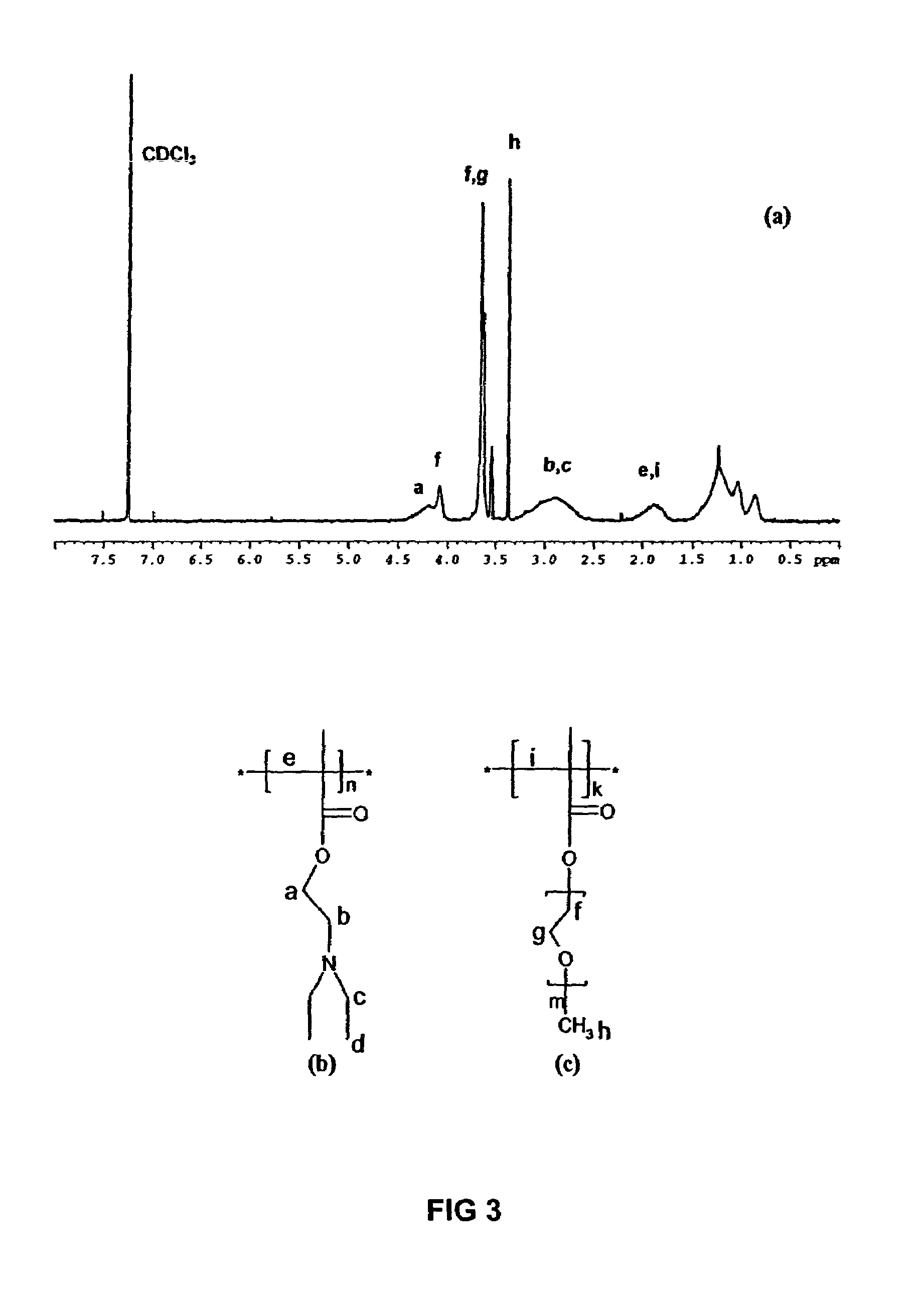pH-sensitive methacrylic copolymers and the production thereof
a technology of methacrylic copolymers and copolymers, applied in the field of copolymers, can solve the problems of not being water-soluble, deaem not being able to form polymer/dna complexes, etc., and achieve the effect of exhibiting cationic ph-sensitive behavior and good water solubility
- Summary
- Abstract
- Description
- Claims
- Application Information
AI Technical Summary
Benefits of technology
Problems solved by technology
Method used
Image
Examples
example 1
Preparation of PEGMEM-co-PDEAEM Copolymer
[0046]A random copolymer having the formula illustrated in FIG. 8 was prepared wherein Z was a diethyl amino group (NR6R7 with R6 and R7 being CH2CH3) and R1 was CH3. The copolymer (I-a) was prepared using N,N-(diethyl amino)ethyl methacrylate (DEAEM) (Sigma-Aldrich, St. Louis, Mo.), poly(ethylene glycol) methyl ether methacrylate (PEGMEM, {overscore (M)}n=300) (Sigma-Aldrich), Potassium t-butoxide (KtBuO) (Sigma-Aldrich) as the initiator, and tetrahydrofuran (THF) (Sigma-Aldrich) as the solvent. Prior to polymerization, both the PEGMEM and the DEAEM monomer were stirred over calcium hydride for at least 24 hours. The dried DEAEM monomer was then distilled under vacuum immediately prior to use. The THF was also dried over sodium metal in the presence of benzophenone until a purple color was present. Once dried, the THF was then distilled under argon and used immediately. Potassium t-butoxide (KtBuO) was used under dry, inert atmosphere with n...
example 2
NMR Characterization
[0048]NMR was used to determine the ratio of diethylaminoethyl methacrylate and poly(ethylene glycol) methyl ether methacrylate for the copolymers of Example 1, as well as residual monomers in any homopolymers and random copolymers. Hydrogen NMR was collected using a Varian VXR300 300 MHz spectrometer. The solvent used was chloroform, CDCl3, for all samples.
[0049]As shown in FIG. 3, both DEAEM and PEGMEM have a 1H NMR peak at approximately 4.3 ppm. The peak integral from the peak near 4.3 ppm is a combination of the first —CH2— groups (α position) next to the methacrylate in both the monomers. However, PEGMEM contains the characteristic poly(ethylene glycol) peak at 3.6 ppm. The peak at 3.6 ppm for the PPEGMEM homopolymer (FIG. 3) was given a normalized integral of 1.000 and the peak around 4.3 ppm was integrated with respect to this peak. The ratio of the 3.6 ppm peak to the 4.3 ppm peak in the homopolymer was considered to be the ratio of the peaks from pure PE...
example 3
[0053]Gel Permeation Chromatography (GPC) was used to obtain the average molecular weight of the polymer as well as the polydispersity index. THF was used as the mobile phase with a sample volume of 300 μl per sample injection. Four PLgel columns (Polymer Laboratories, Amherst, Mass.) heated to 40° C. achieved the appropriate separation. An Optilab inline refractometer (Wyatt Corp, Santa Barbara, Calif.) was used as the detector for retention times of the synthesized polymers relative to poly(methyl methacrylate) standards.
[0054]GPC results relative to poly(methyl methacrylate) standards were drastically lower than what was expected based on initiator concentration (Table 1). The polydispersity index (PDI), however, was on the order that is expected for anionic polymerization. In the absence of premature termination or slow initiation, both of which would cause a much broader molecular weight distribution, there is little explanation of a {overscore (M)}...
PUM
| Property | Measurement | Unit |
|---|---|---|
| molar ratio | aaaaa | aaaaa |
| temperature | aaaaa | aaaaa |
| temperature | aaaaa | aaaaa |
Abstract
Description
Claims
Application Information
 Login to View More
Login to View More - R&D
- Intellectual Property
- Life Sciences
- Materials
- Tech Scout
- Unparalleled Data Quality
- Higher Quality Content
- 60% Fewer Hallucinations
Browse by: Latest US Patents, China's latest patents, Technical Efficacy Thesaurus, Application Domain, Technology Topic, Popular Technical Reports.
© 2025 PatSnap. All rights reserved.Legal|Privacy policy|Modern Slavery Act Transparency Statement|Sitemap|About US| Contact US: help@patsnap.com



